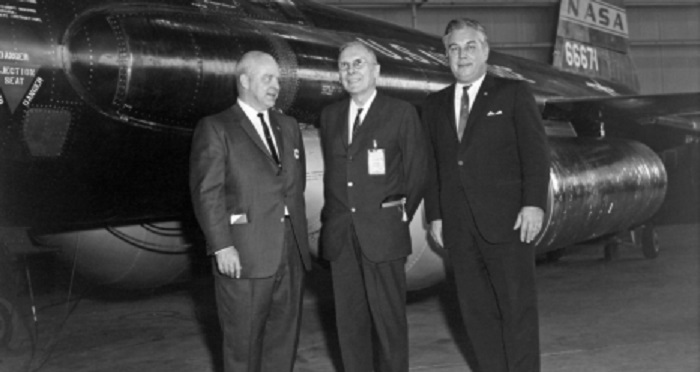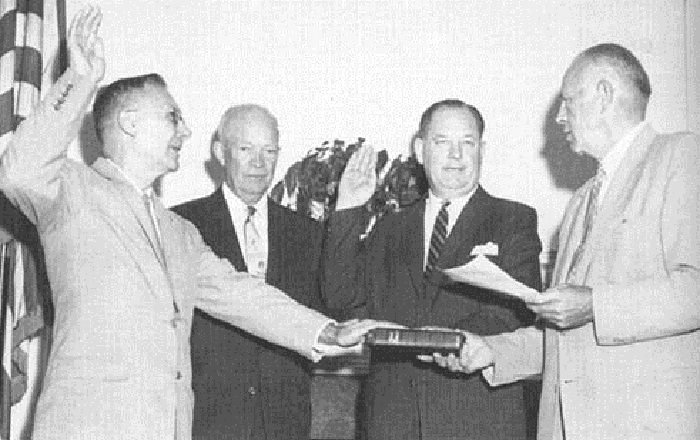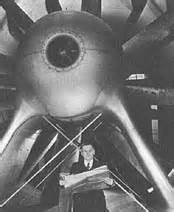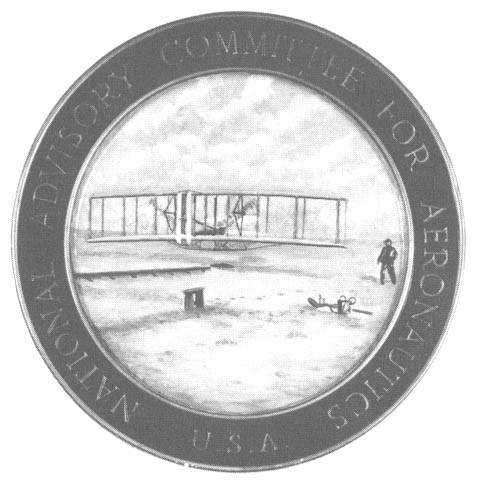.

A brilliant aerodynamicist and leader, Hugh Dryden may well be the most influential NASA official of whom you’ve never heard.
.
A brilliant aerodynamicist who not only conducted critical aerospace research far ahead of his time, but also a quietly effective government leader, Hugh Dryden may well be the most influential NASA official of whom you’ve never heard.
Dryden was born in the rural village of Pocomoke, Maryland on November 7, 1898. After suffering various career and financial setbacks his family settled in Baltimore, where his father worked as a streetcar conductor. Despite his modest background, Dryden showed signs of superior aptitude, having achieved a fifth-grade reading level by age 8. After graduating high school first in his class at age 14, Dryden was awarded a full scholarship to study at the prestigious Johns Hopkins University. Asked later in his life what he thought made the United States a great nation, he replied “…the equality of opportunity offered to each of its citizens to develop his personal talents to the fullest and to participate in the development of those accomplishments and ideals which make our national environment beneficial to all people.” Dryden’s life embodied this perspective and aspiration.
While at Johns Hopkins, he studied under Professor Joseph Ames, the legendary physicist, founding member of the National Advisory Committee for Aeronautics (NACA) and namesake of the Ames Research Center. Ames became Dryden’s mentor and shaped his career. In three years, the young Dryden completed his bachelor’s degree, followed by his master’s degree a year later.
.

Ames then placed Dryden in a full-time job at the National Bureau of Standards testing munition gauges as the First World War wound to a close. Despite a long commute by train each day, Dryden simultaneously worked in the Bureau’s laboratory while completing his doctoral degree at Johns Hopkins. A year later, at the age of 20, Dryden was granted a doctorate in applied physics, making him the youngest person ever to receive a Ph.D. from Johns Hopkins University. His doctoral dissertation “Air forces on circular cylinders” broke new ground on the scale effects of air flows and won him the post of Chief of the Aerodynamics Section of the National Bureaus of Standards.
In charge of one of the country’s most advanced wind tunnels, Dryden quickly won grants from the fledgling NACA and conducted research on the problems of wind tunnel turbulence and boundary layer flow that earned him international recognition. Working closely with his research partner and mentor, Dr. Lyman J. Briggs, Dryden produced a series of path-breaking NACA Technical Reports and other publications that dealt with supersonic flight at a time when the top speed of airplanes was just over 200 miles per hour.
Dryden’s keen mind was accompanied by a self-effacing sense of teamwork that not only won him research success, but rapid promotion to management positions at the Bureau of Standards and recognition by national and international professional societies. It also brought him to the attention of the leading scientific minds of the time, including Theodore von Kármán. Although their personalities could not be more different, von Kármán and Dryden developed a close relationship and would, together, have a huge impact on the course of U.S. science and technology policy.
During World War II Dryden led the development of the U.S. Navy’s BAT radar homing missile, which was used to great effect in the final phases of the war in the Pacific. Von Kármán then recruited Dryden to serve as his deputy on the Army Air Force’s Scientific Advisory Group. After inspecting European science facilities (dressed as an Army Colonel), including intense debriefings of German rocket scientists, Dryden served as the general editor for the seminal “Toward New Horizons” Scientific Advisory Group report to General Hap Arnold. The report set the agenda for post-war research for both military and civilian efforts in air, and space, flight.
On the retirement of long-standing leader Dr. George W. Lewis in 1947, Dryden was selected to take his place at the helm of the NACA. Building on the insights gained during the War, Dryden quietly, but effectively, overhauled the NACA to pursue high-speed flight and space research. Within a month of his appointment, he travelled across the country to visit the Muroc Flight Test Unit that had been set up as a temporary NACA deployment for the initial supersonic flights of the Bell X-1. Shortly afterward the temporary operation at Muroc became a full-fledged permanent NACA research facility (that was later named in honor of Dryden).
Dryden’s standing as a world-class scientist, familiarity with his military and industry partners, and focused patience served the NACA and the country well during this critical period of research and development. He brokered the arrangement with the U.S. Army and U.S. Navy that led to the creation of the hypersonic X-15 and served as Chairman of the interagency committee in charge of that project. Dryden was also the key facilitator in creating the National Unitary Wind Tunnel Plan that resolved industry and military service disputes over the creation of the family of supersonic and hypersonic wind tunnels that proved crucial to U.S. success in aerospace research. He also encouraged brilliant researchers, particularly at the Langley and Ames research centers, to focus on rocketry and re-entry studies. Without changing the NACA charter, and largely on his own initiative, Dryden transformed the focus of research so that by the mid-1950s a quarter of the NACA’s research projects were focused on the topic of space travel.
When the Soviet Union surprised the world with the first Sputnik launches in 1957, the NACA was already a de facto space agency. Dryden had hopes of continuing to lead the NACA as it was transformed into the National Aeronautics and Space Administration (NASA) in 1958. However, some senior members of Congress held Dryden responsible for the Sputnik surprise. Dr. T. Keith Glennan was appointed the first Administrator of NASA, but he accepted the post only on the condition that Dryden remain as Deputy Administrator. With characteristic humility Dryden swallowed his pride and put his all into transforming the NACA into NASA. The rapid development of Project Mercury, other human spaceflight programs, and scientific work at NASA were a testament to Dryden’s technical insight, deft hand at selecting and encouraging young leaders of promise, and selfless devotion to the mission. In the spring of 1961, Dryden also played a critical role in convincing Vice President Johnson and President Kennedy that a human mission to the Moon was a feasible goal for the 1960s.
Although diagnosed with cancer in 1962 Dryden kept up a punishing schedule of work as Deputy Administrator. In addition to overseeing the spectacular growth of NASA’s staff, facilities, budget, and assignments in the early 1960s, Dryden was also charged with leading negotiations with the Soviet Union on space cooperation. His international standing and previous encounters with Soviet scientific leaders through his membership in a wide variety of international professional societies made him the natural choice for initial contacts with the Soviets during the Eisenhower Administration. Later, under President Kennedy, Dryden brokered the very first space cooperation agreement with the USSR in 1962. He died in December 1965, several years before the Apollo Program came to fruition, and decades before his efforts at international space cooperation with Russia would bear lasting fruit. Throughout his adult life Dryden also served as a very active lay Methodist minister, spending many of his Sundays preaching at churches around the country. In March 1976, the NASA Flight Research Center at Edwards, California, was renamed the Hugh L. Dryden Flight Research Center, in his honor.
On Saturday, March 1, 2014, the Hugh L. Dryden Flight Research Center will be officially renamed Neil A. Armstrong Flight Research Center, in remembrance of the first astronaut to walk on the lunar surface in 1969, a feat achieved as a result of Dryden’s enduring legacy. Dryden’s name will, however, remain attached to this key facility; the Western Aeronautical Test Range located at the Center will be named in Dryden’s honor.
.

Showing the resolve with which he took over the directorship of the NACA, Hugh L. Dryden poses in front of the motor and fan powering Langley's 19-foot pressure tunnel.


